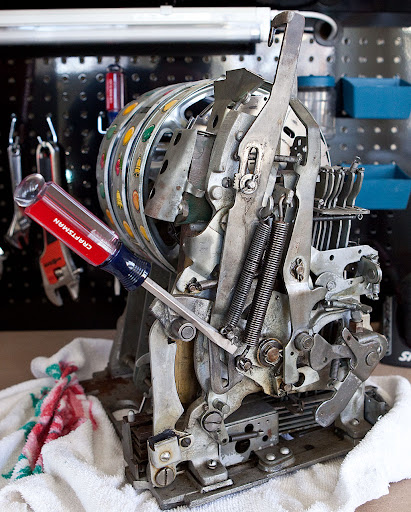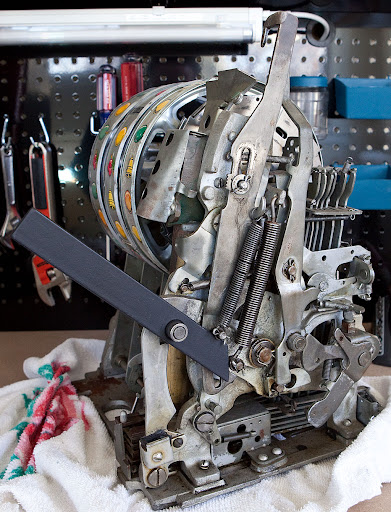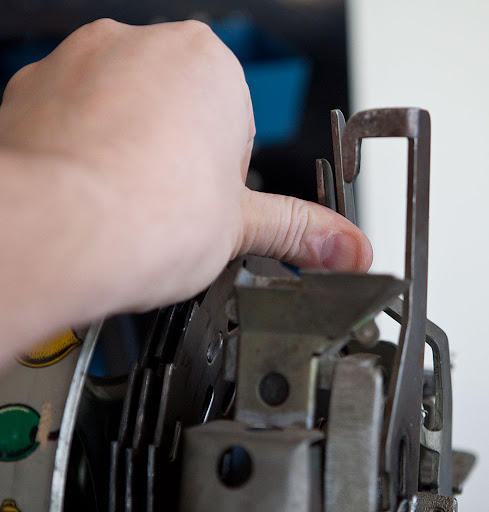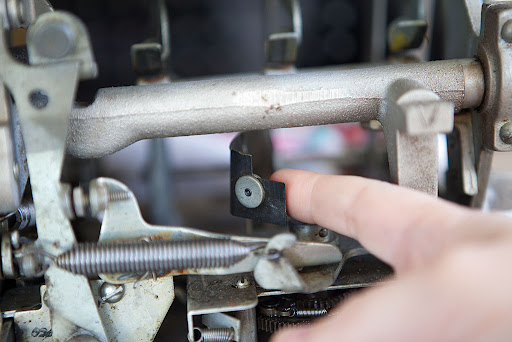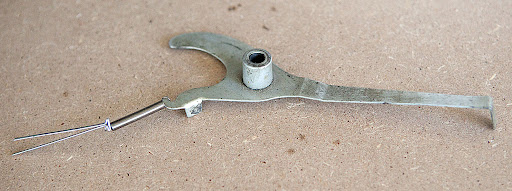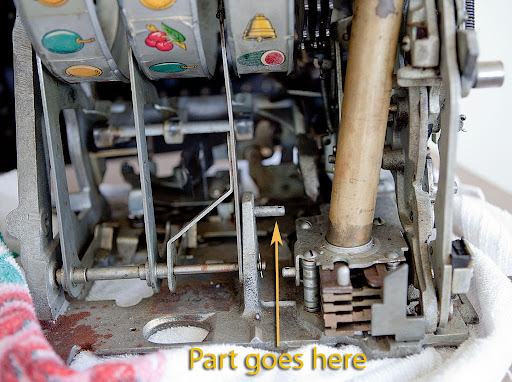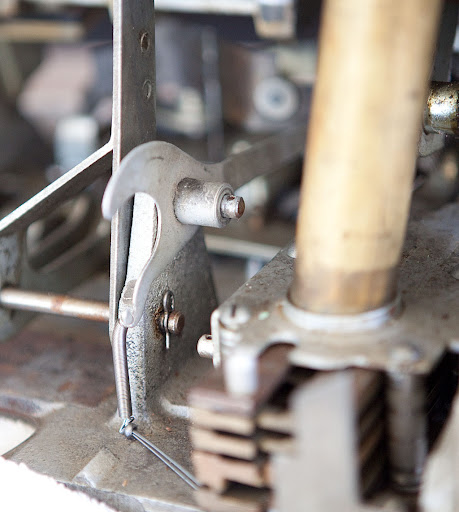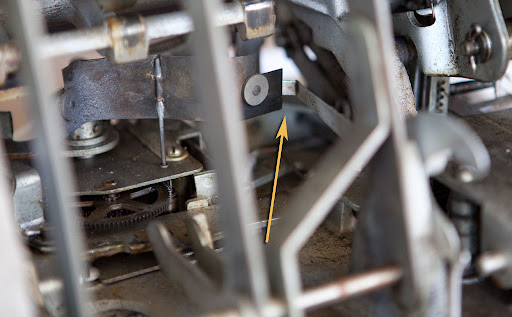If you are new to slot machine restoration, there are a few things that you will need to consider before you get started. Reference books and/or videos are important, even if you are an experienced do-it-yourselfer. Likewise, a good set of basic tools is also a necessity. I’ll talk more about both of those things later. Today, however, I want to talk about a very basic skill, a neat tool, and a really handy part that is often missing from antique slot machines. Whenever you work on a machine, you will undoubtedly need to take the mechanism through its play cycle while the machine is outside of the case. This is an easy thing to do, but a bit nerve wracking the first time you do it unless you’ve had someone show you how. All you really need to cycle the mech is a screwdriver. It is placed like this:
Although the screwdriver works just fine, inevitably I end up needing that screwdriver for other things and am constantly misplacing it. Bernie Berten (mrslot1@aol.com… email for a catalog) makes a neat little tool, though, that I bought a while back. Check this out:
I keep this hanging on my peg board, and it’s always ready to cycle the mech. It’s a simple thing, and I could have made one for myself if I’d thought about it, but buying one was easier and it cost less than $20. Anyway, using either a screwdriver or one of the special tools, you need to do two things in order to cycle the mech. If you just pull down on the screwdriver to simulate a handle pull, you will notice that the coin detection and check detection arms at the top of the mech start to move forward. This makes the machine think (if think is the right word) that no coin has been deposited, and the handle will stop before the mech has been cycled. To get around this, hold back on the coin detection and check detection arms with your thumb:
Now, the machine thinks that a coin has been inserted. Pull down on the handle (while continuing to hold back the coin detect and check detect levers, which is not show below) and the mech should start its play cycle.
It isn’t strictly necessary to hold back the check detection arm in order to just cycle the mech, but it is necessary if you are wanting to check the operation of the payout system. If the coin detection arm is held back but the check detection arm is allowed to move, the mechanism will think that you have inserted a check (a token with a hole in the middle) instead of a coin, and it will cycle but inhibit the operation of the payout cycle. I generally hold back both levers, which is a good habit.
When diagnosing problems or disassembling the mechanism it is frequently necessary to stop the mechanism at various points in the play cycle. This is accomplished by stopping the clock fan, which is easily accessible from the back of the mech. Although the clock fan spins quickly as the mechanism is cycling, the spin doesn’t have any significant force behind it, meaning that you can stop the fan with your finger or a strategically-placed screwdriver. When the fan blade stops, the play cycle is halted until the fan is released.
Now, if you’ve been paying attention, you may have noticed a slight problem. If we want to cycle the mech and stop the fan at the beginning of the play cycle we don’t have enough hands. We need one to hold back the coin detect lever, one to simulate the handle pull, and another to stop the fan. It’s possible to wedge a screwdriver in place to stop the fan, but there is a better way.
The part above is known as the “Fan Stop Lever” or the “Fan Stop Assembly” and is very frequently missing from antique slot machines. It isn’t critical to the operation of the machine, but it is very handy for working on the mechanism when it is out of the case. Let’s look at the location where this piece is installed.
Looking at the front of the mechanism, we can see the post where the Fan Stop Lever is installed. Underneath it you will find a small eyelet where you can attach the related spring. Here’s what the part looks like installed (but without cotter keys installed to keep it in place):
The lever’s purpose is to keep the mech from cycling when the jackpot door is open, but it also prevents operation when the mechanism is not installed in a case by blocking the clock fan. Essentially, the lever is that third hand that I mentioned needing above. With this part installed you can start the mech cycle, then lift the front of this lever whenever you want the cycle to proceed further. If you release the lever, the cycle stops again.
In the photo above, you can see the back of the lever blocking the clock fan. As I mentioned, this part is frequently missing from old machines, and I generally don’t keep one installed on any of the machines I have in my home. I do, however, keep one around and install it temporarily on any mech that requires some work. You can often pick these levers up on eBay for $10-$15, and they are well worth the money.
Well that about does it for cycling the mech. Next time we’ll talk about some of the standard reference materials related to Mills restoration, then we’ll roll up our sleeves and get busy.
